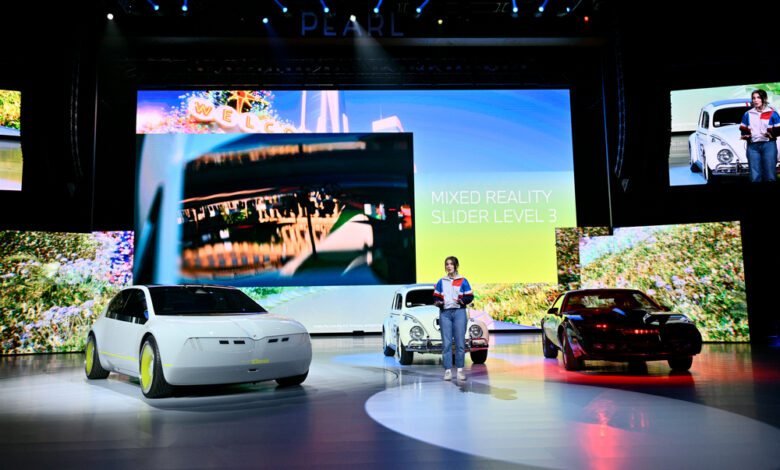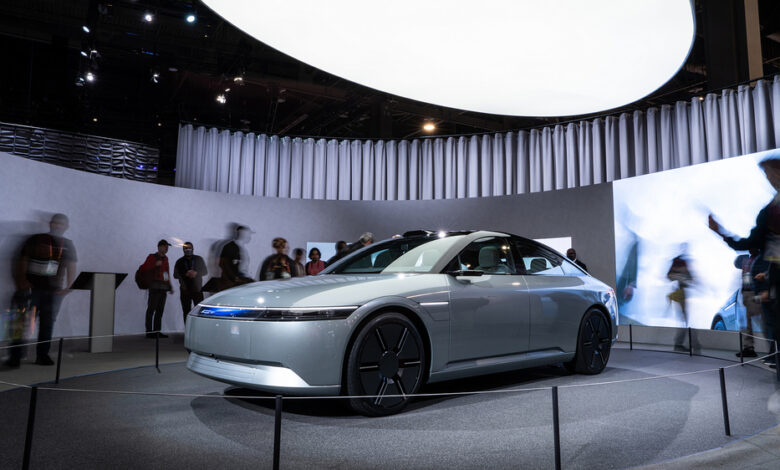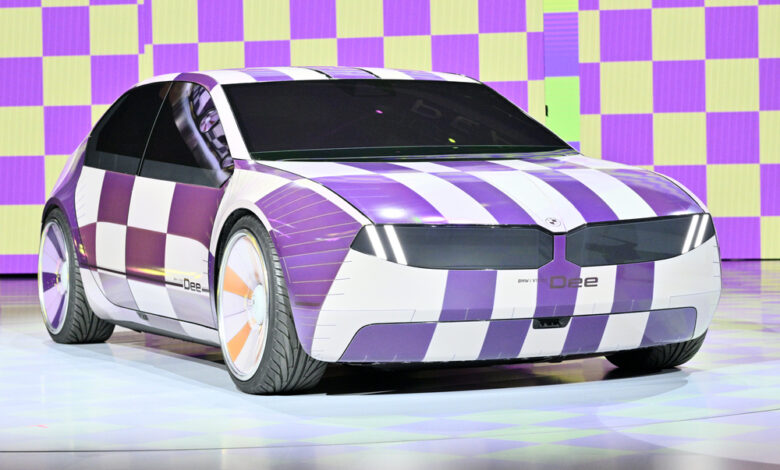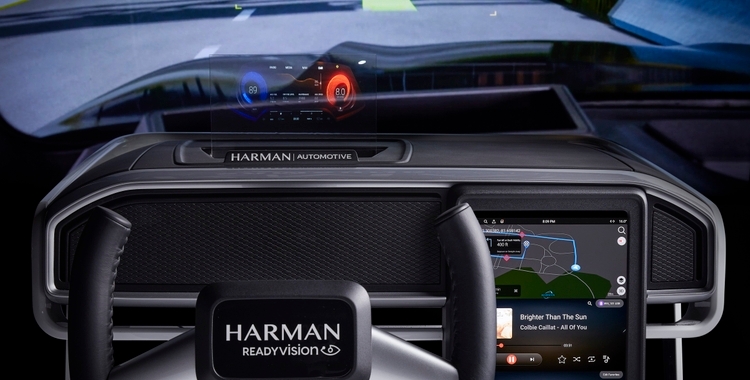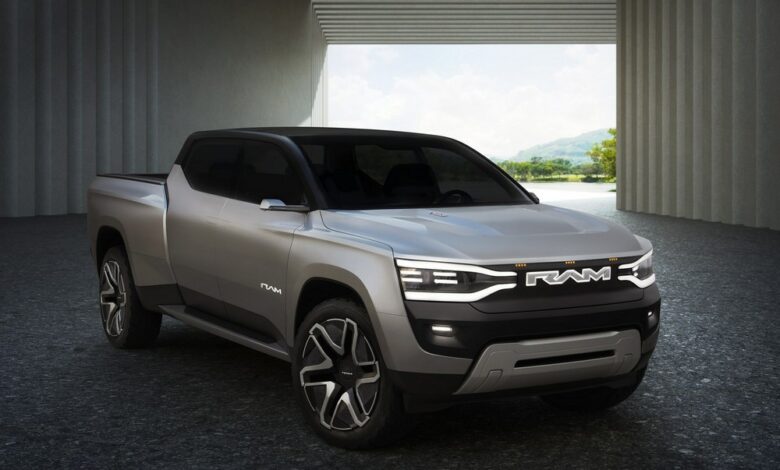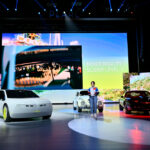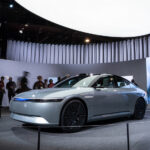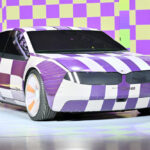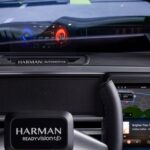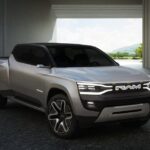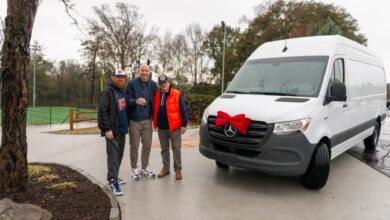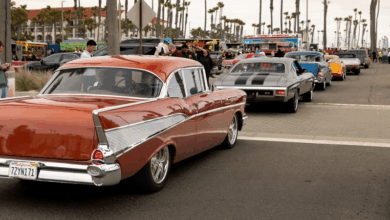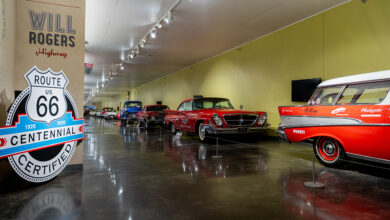CES 2023: Technology & the Automobile
Vehicle trends are playing a bigger role in the consumer electronics industry.
This article originally appeared in the May 2023 issue of THE SHOP magazine.
There’s no doubt that as cars go electric and become laden with more tech, it may be more accurate to consider them electronic devices with tires. That’s why the Consumer Electronics Show in Las Vegas is such a hotbed for automakers.
While CES may not be the next SEMA Show, the tremendous support by OEM automakers is bringing in new attendees. That growth is also allowing legacy consumer electronics companies to partner with automakers in unique and exciting ways.
CES 2023 attracted a lot of names you might not have expected. There were more than 300 vehicle tech exhibitors in all, turning the convention center into one of the largest auto shows in the world.
Keynotes from BMW, John Deere and Stellantis, and product launches from global companies focused on self-driving tech, electric vehicles and personal mobility devices for land, air and sea, all brought an automotive slant to the techie world.
Some notable vehicle-tech exhibitors this year included Candela Marine Technology, GM, Italdesign Giugiaro, Magna, Mercedes-Benz, MobilEye, Waymo, RYSE and Volvo Penta. All of them and others had stories to share.
EVS ARE WHERE IT’S AT
According to Consumer Technology Association research, drivers are increasingly embracing the EV experience.
In CTA’s 2021 Electric Vehicle Landscape and Consumer Sentiment Research report, 100% of current owners said their EVs have met or exceeded their expectations on being fun to drive, and 92% indicated they were “likely or very likely” to consider an EV for their next purchase.
The secondary facet is environmental responsibility. While there’s still a lot to be said regarding creating the energy for EV production and the harvesting process for rare earth metals, most agree that EVs are a good thing—especially in populated city centers to reduce idling fumes.
CTA notes that CES exhibitors Stellantis and Hyundai-Kia have committed to significant EV rollouts. Hyundai will have 23 EV and hydrogen car models available by 2025, while Stellantis plans to offer 55 electrified cars and trucks in the U.S. and Europe in that same timeframe.
Carlos Tavares, CEO of Stellantis, notes, “We’re spotlighting our most advanced technologies that serve as a force for good as we work to achieve carbon net zero emissions by 2038. At CES, you’ll see how our startup soul and global scale guide us as we reimagine mobility, shift all paradigms and lead the way the world moves.”
HONDA PARTNERS WITH SONY
One of the bigger pieces of automotive news to come out of the show introduced a partnership between industry powerhouses Honda and Sony. The companies announced the development of a new electric vehicle called Afeela—a play on the word “feel,” which they say is at the center of their mobility experience.
The basis of the Sony Honda Mobility (SMH) mission statement is to “move people,” the companies explain.
“Through the pursuit of innovation with diverse inspirations, we aim to create a new mobility lifestyle by leading people’s hearts and minds toward an open, pleasant and exciting experience. To realize this, we aim to revolutionize the mobility space as a Mobility Tech Company, alongside likeminded people who are pioneering a new future with creativity, through cutting-edge technology, and with passion.”
Although that sounds like the boilerplate for most new EV car companies, the Sony part of the equation injects infotainment as part of the experience. Those of us in the 12V aftermarket learned long ago to never underestimate the value of good infotainment!
As for the vehicle itself, the front end of the Afeela includes a light bar that can help communicate with drivers and pedestrians, while the interior features screens that wrap from A-pillar to B-pillar in an otherwise minimalistic environment with a lack of hard buttons like Tesla.
The announcement says the goal is for Afeela to have Level 3 autonomy under the correct limited conditions (mapped highways), thanks to 45 cameras and sensors flanked around the vehicle.
Meanwhile, Sony developed a new Human Machine Interface (HMI) that will be constantly updated through the cloud. The HMI goes places that are strange to us today, but could very well be the future.
“We aim to evolve mobility space into entertainment and emotional space by seamlessly integrating real and virtual worlds and exploring new entertainment possibilities through digital innovations such as the metaverse,” according to the announcement. “We have started to build new values and concepts for mobility with Epic Games. We aim to provide intuitive navigation through augmented reality (AR) using our sensing technology. We will build an open community for not only customers, but our automotive industry partners, leading players in other industries, and the creative community, which will take on the challenge with us to create new mobility entertainment.”
How the affiliation with Epic Games will be implemented will be interesting to see, but passengers should be able to game while in motion, with their surroundings becoming part of the experience.
Delivery of Afeela is scheduled for 2026. Just like Tesla’s Cybertruck, the date could be subject to change. Honda does have the capabilities of scale and the factories to make something happen in a reasonable timeframe, however, so stay tuned.
BMW I VISION DEE
Last year, BMW showed a car that could change from white to black to different shades of gray. This year it took the technology to the next level and developed a color-changing vehicle.
The BMW i Vision Dee (“Dee” stands for Digital Emotional Experience) can shapeshift into 32 different colors.
“With the BMW i Vision Dee, we are showcasing what is possible when hardware and software merge,” says Oliver Zipse, BMW chairman. “In this way, we are able to exploit the full potential of digitalization to transform the car into an intelligent companion. That is the future for automotive manufacturers, and also for BMW: the fusion of the virtual experience with genuine driving pleasure. At the same time, BMW i Vision Dee is another step on the road to the Neue Klasse.”
(“Neue Klasse” translates to “New Class.”)
This new BMW platform is developed strictly for electric cars, versus older platforms that could be gas, hybrid or EV.
“With this vision, we are looking far into the future and underlining the tremendous importance of digitalization for our upcoming product generations,” Zipse continues.
Along with the color-shifting aspect, the digital instrument cluster and massive heads-up display also stand out. The driver can use a slider to determine how much digital content and what kind of content comes up on the extra-large HUD.
Rather than being confined to a small area above the steering wheel, the HUD on the i Vision Dee extends the entire length of the windshield. The steering wheel features a thumb-operated central vertical spoke that creates touchpoints that come to life when approached or touched.
These physical touchpoints control selection of the content projected onto the windshield and, together with the mega heads-up display, support the principle of “hands on the wheel, eyes on the road.”
In addition to the steering wheel, content can also be controlled by swiping the area where an infotainment screen would traditionally reside. This controls the information projected on the HUD.
The system highlights the potential of aftermarket HUDs. Imagine having engine data being projected on the windshield without having to fabricate an instrument cluster binnacle.
HARMAN HELPING BRING IT TOGETHER
With so much technology being brought to infotainment screens and HUDs, HARMAN (the electronics company recently acquired by Samsung) showed off its new display technology at CES. It combines AR software coupled to a HUD projector with a sleek new shape (versus the old wedge-shaped HUD projectors).
HARMAN Ready Vision delivers turn-by-turn directions onto the windshield. It also encompasses 3D object recognition. The computer and software can then deliver ADAS alerts such as collision warnings, blind spot warnings, low speed alerts and lane change assist.
“This launch is a key component of HARMAN’s mission to enhance the safety of drivers, passengers and pedestrians, while cultivating transformative in-cabin experiences,” says Armin Prommersberger, senior vice president of product management, HARMAN International. “Ready Vision solves key industry challenges around driver safety by helping drivers better understand their surroundings and enabling an eyes-forward, focused journey. Our new product empowers the driver with the right information at the right time, even in the most unfamiliar driving scenarios, making their time on the road more intuitive and safer.”
Automakers will be able to purchase the technology from HARMAN as a supplier.
RAM-CHARGER
Stellantis has been waiting for the right time to launch the electric Ram pickup. If you saw its Super Bowl ad, you know now’s the time.
“The Ram 1500 Revolution BEV Concept is our clearest signal yet that we’re on the precipice of something extraordinary at Ram and points directly to where we’re going on our electrified journey,” says Mike Koval Jr., Ram brand CEO – Stellantis.
The concept features an exterior design the company calls “brutiful—brutal yet beautiful.” An animated and modernized R-A-M badge adorns the all-new face, which features a fully animated LED “tuning fork” design. The doors have been reimagined in a grand saloon-style opening that showcases a cavernous occupant space without a B-pillar.
Bright LED lights integrated into the front bumper flares and fully animated LED taillamps and badging grab attention, while an integrated fascia design includes a skid plate and pivoting tow hooks that can sit flush.
The powered frunk has one-touch open-and-close functionality. Other powered features include a charge-port door situated on the driver’s side front quarter panel, a powered tailgate, flush-mounted door handles, powered side steps and a powered rear step with active diffuser.
The acute hourglass body design and fender wells clear 35-inch tires, and a new interior boasts sustainable materials and increased levels of flexibility, comfort and innovation.
